Green Heron fishing, feeding and resting at Lakeshore State Park in Milwaukee Wisconsin. Photographs were taken on July 9, 2014.
Green Heron
Binomial name: Buborides virescens
Category: Bitterns, Herons, and Allies
Size: 18” long, 26” wing span
Weight: 7 Oz.
Habitat: Breed in areas of woods or areas with thick vegetation near ponds, marshes, rivers, streams, reservoirs and estuaries. They stay at coastal areas and mangrove swamps in the winter months.
Diet: Green Herons consume fish as their main diet, but also eat amphibians, insects, crustaceans, snails, reptiles and rodents. They catch their food standing still at pond, lake, swamp, creek, marsh, or river edges then darting out with their head snapping up its prey. They also spear their prey with their sharp bill. They usually hunt in waters of less than 4” deep. Deeper waters are usually visited by larger heron species with longer legs.
Nesting: Start of the construction of the nest is done by the male. After a pair is formed the female helps in the nest building. The nest is usually 8-12” across with a bowl of about 2” deep with no lining. The nest is usually located over water at ground level to 30’ or more above the water, but can also be located up to distances of a half mile away from water. They also are known to fix up old nests and during the breeding season they continue to add sticks to their nests as necessary.
Cool fact: Green Herons are known to use bait like insects to bait their prey. In some images below a Green Heron used a fly to try to attract a small fish to eat. It repeated this a couple of times as I stood there but was unsuccessful that time in getting it’s fishing trick to work that attracts fish or other prey, to then snatch up.

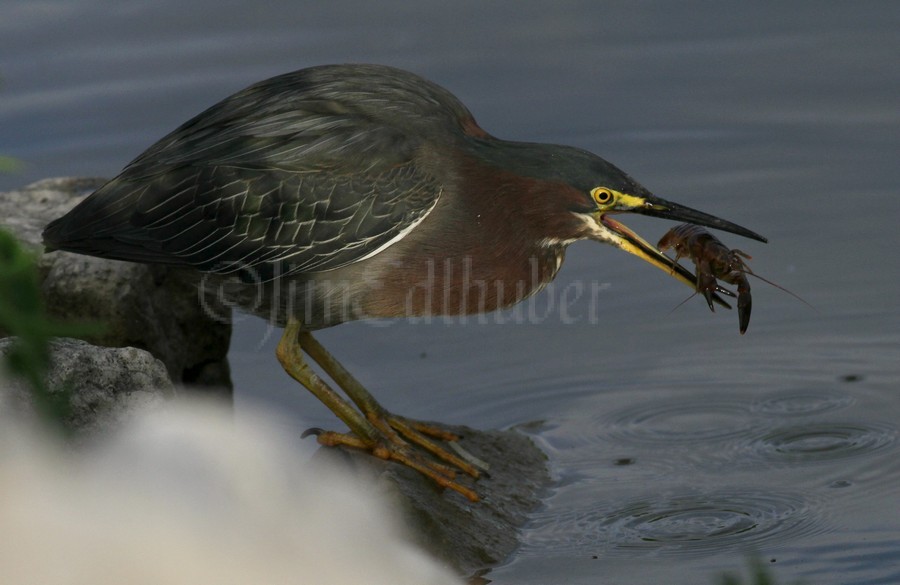
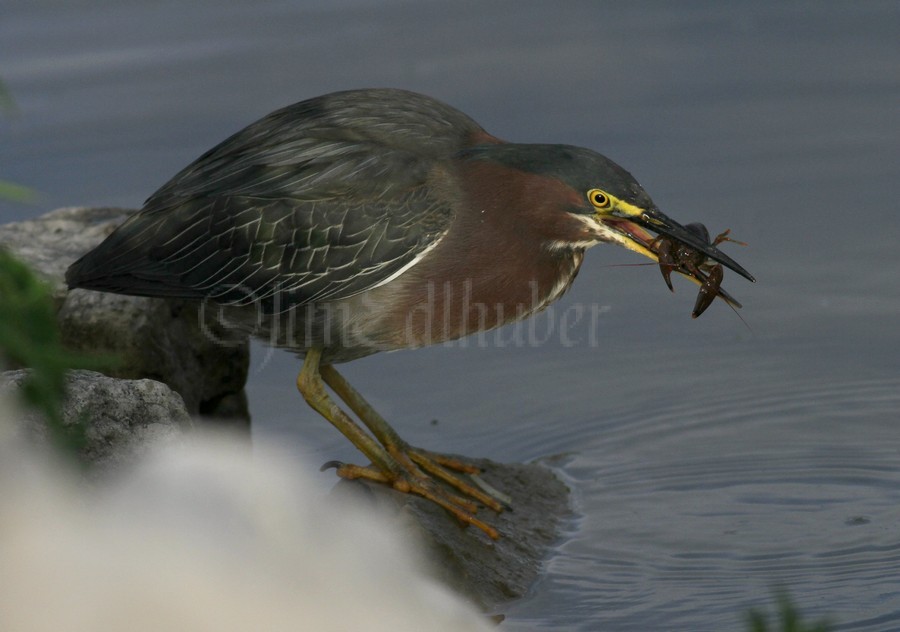
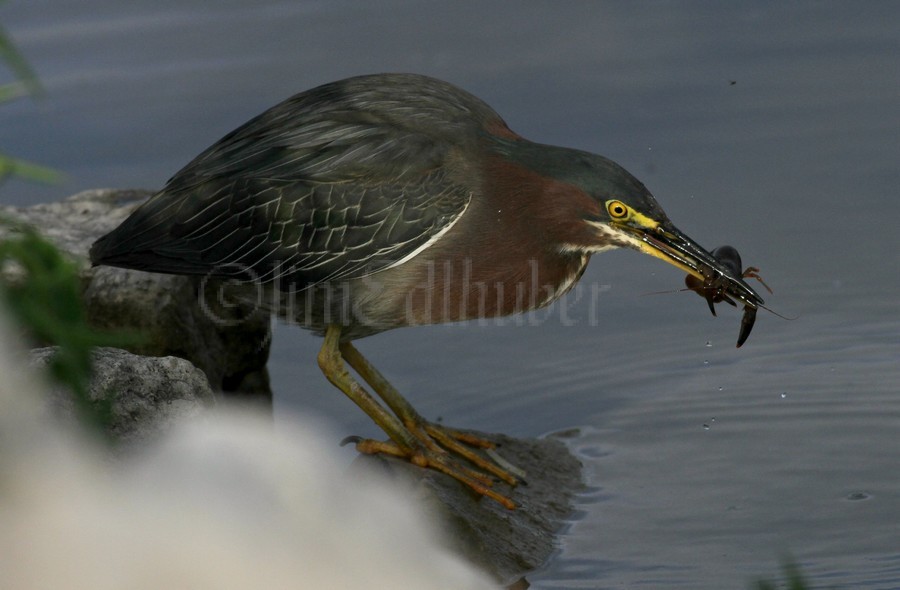
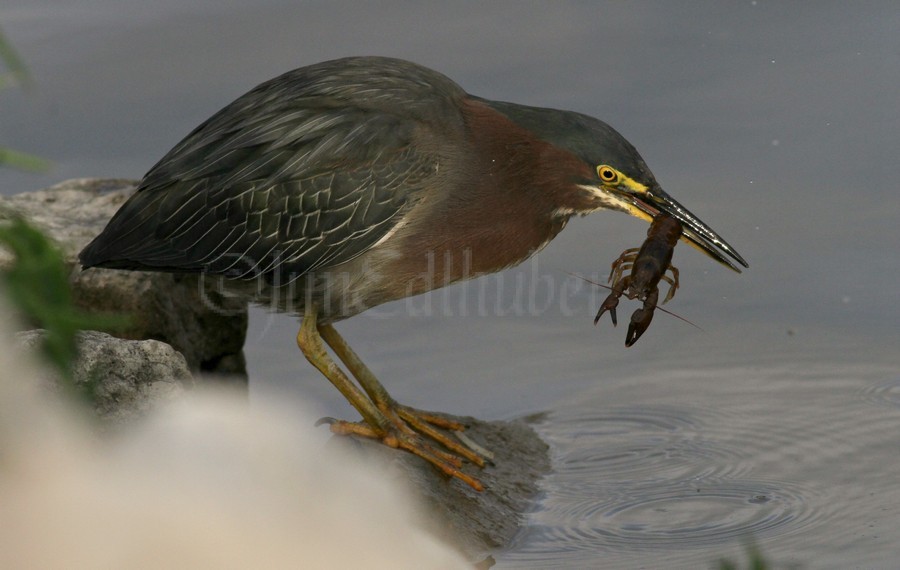
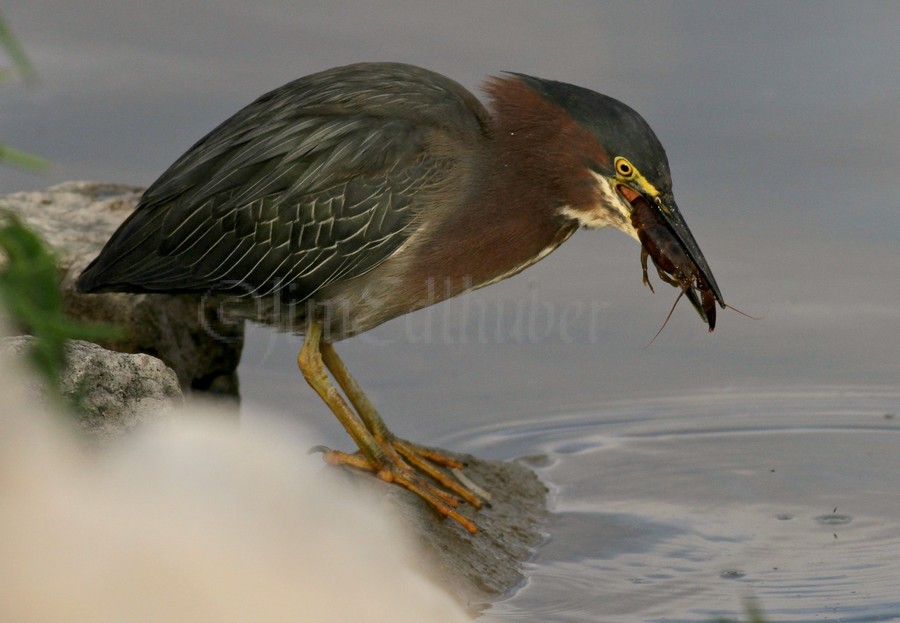
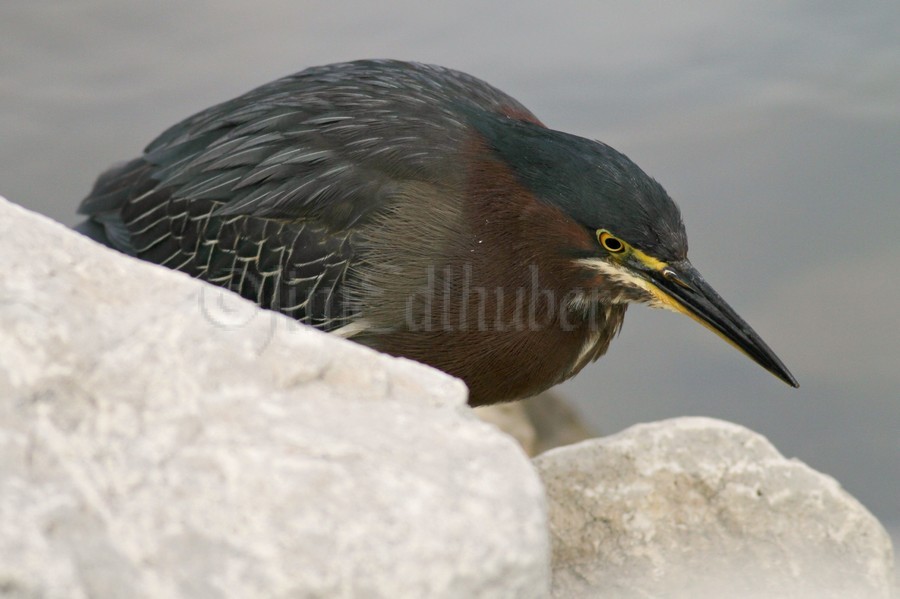
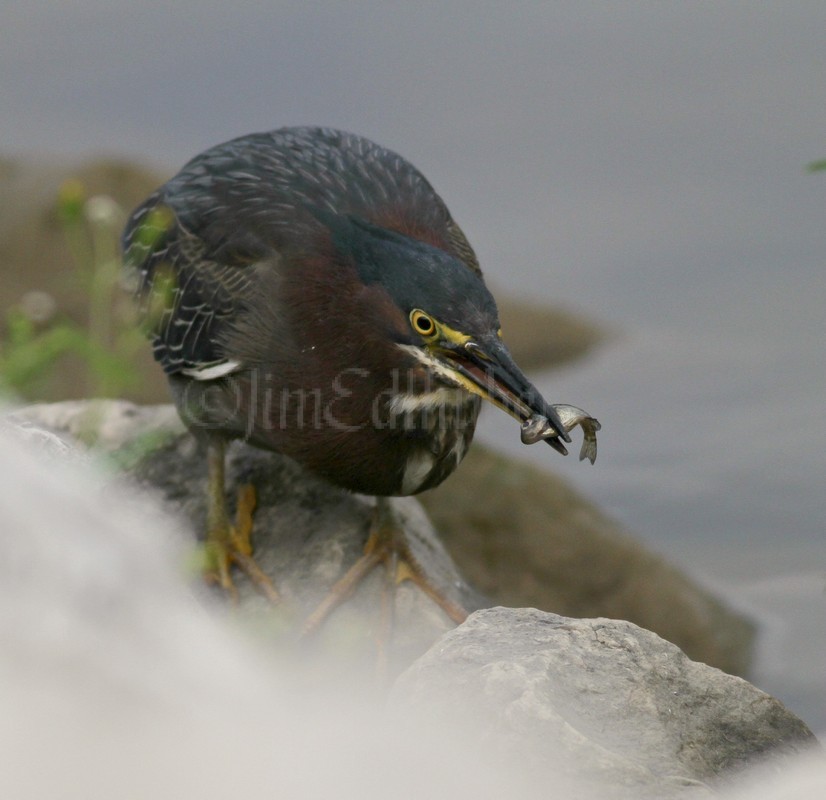
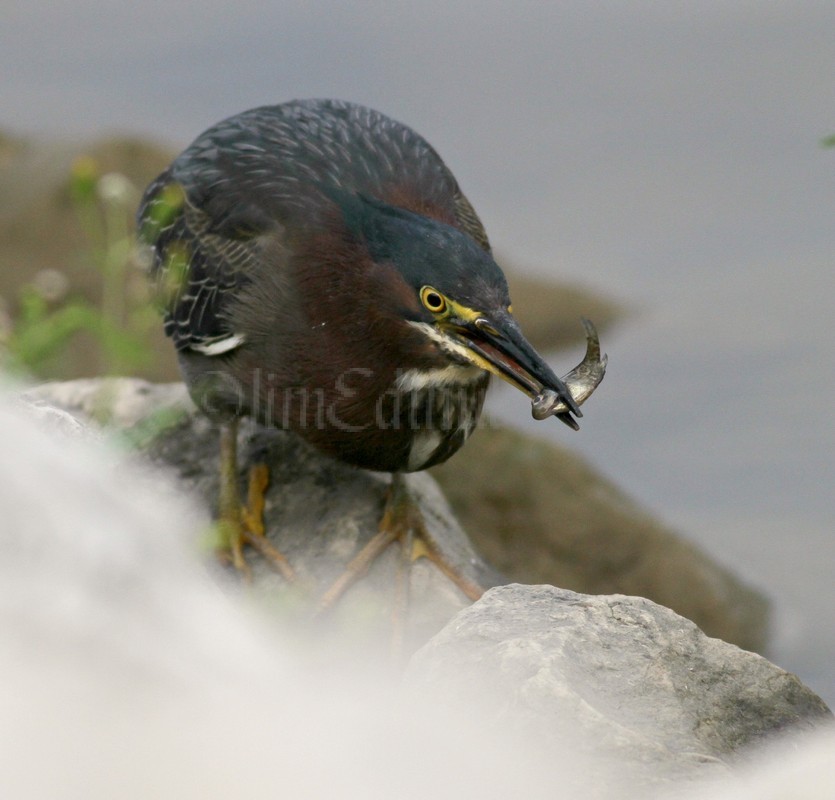
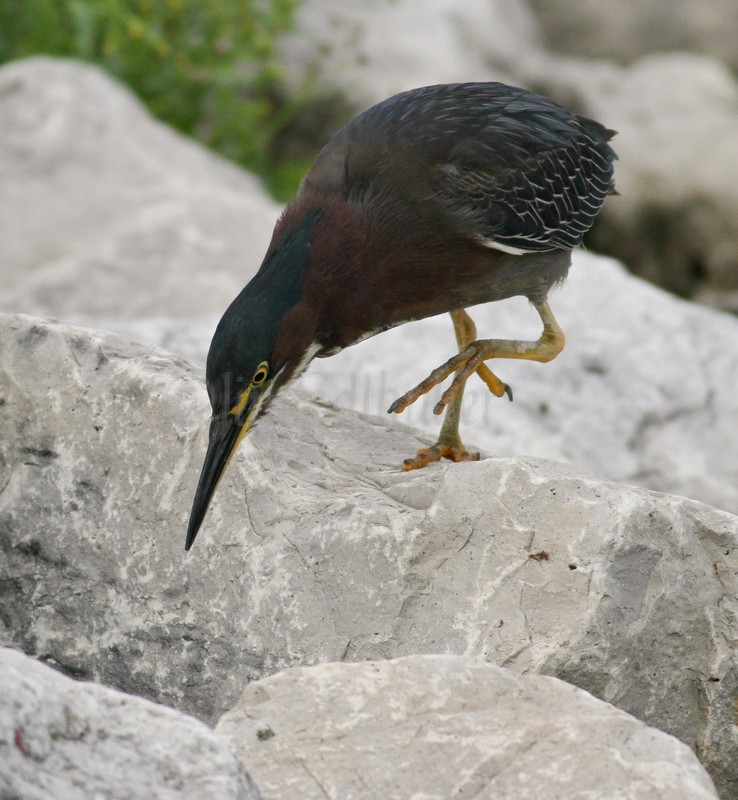
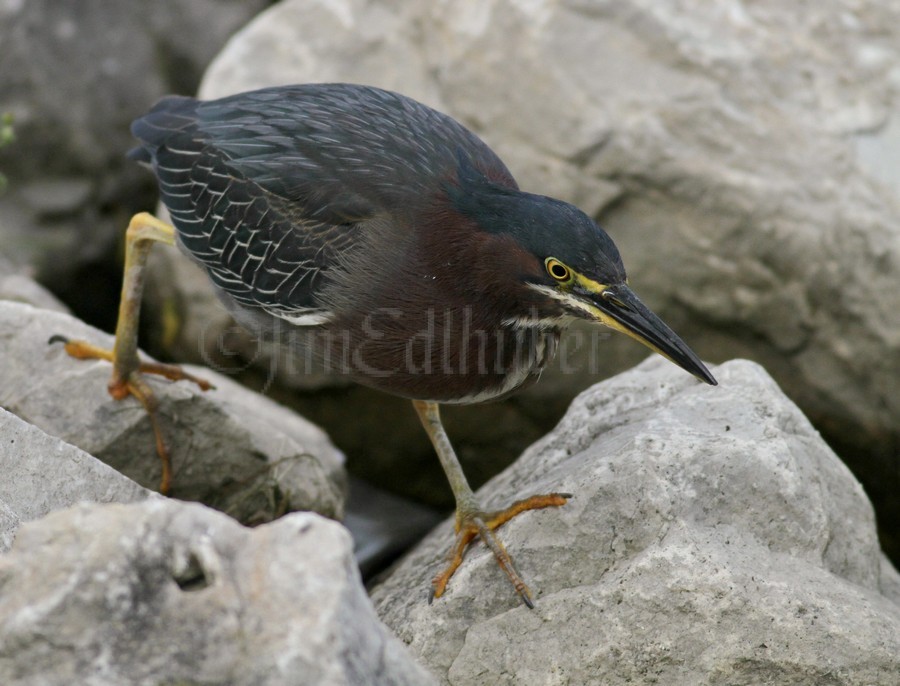
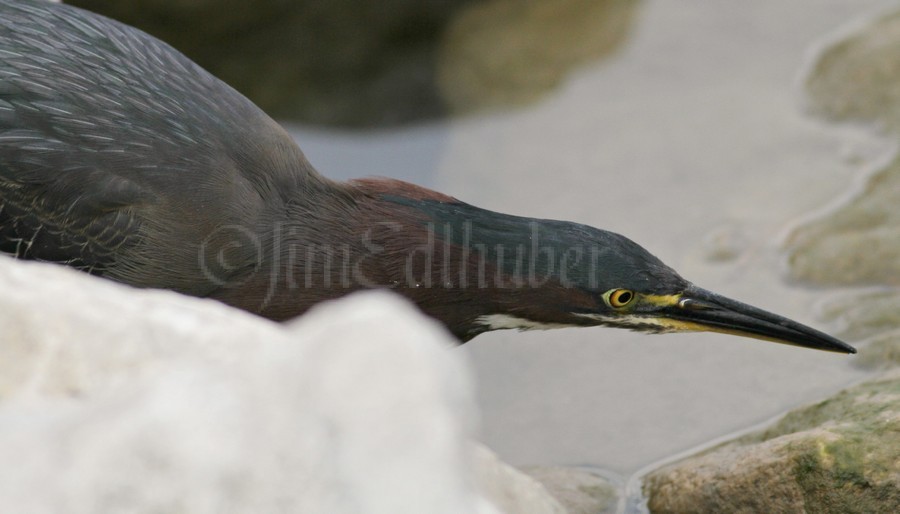
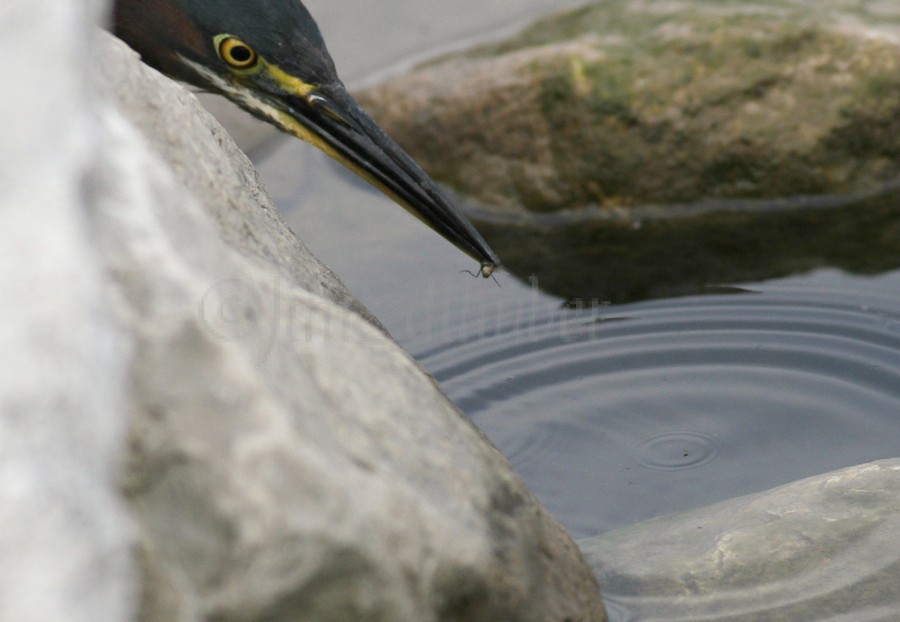
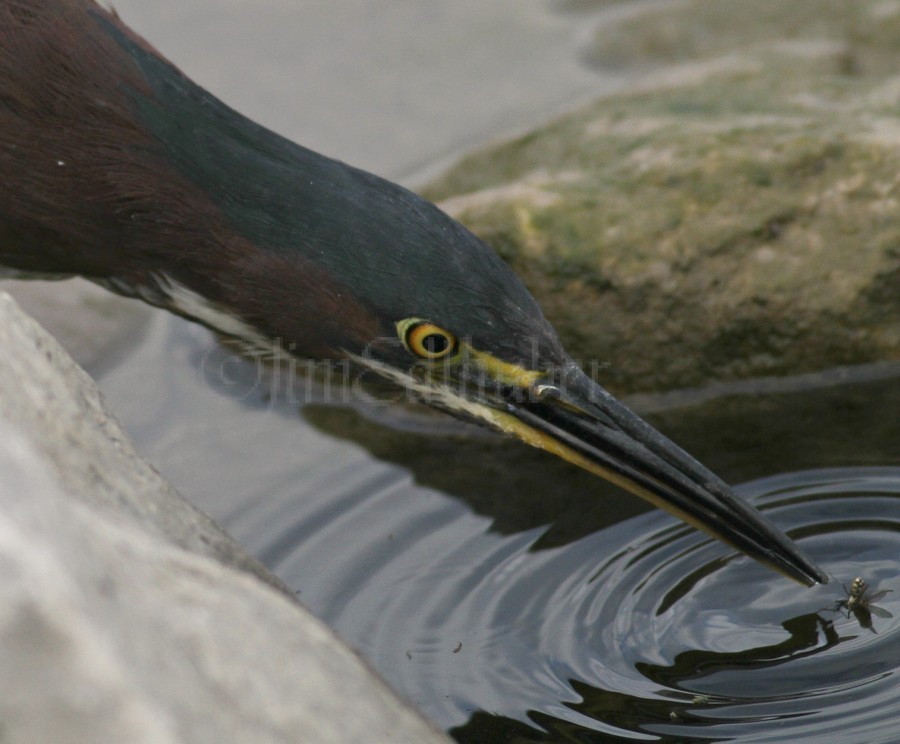
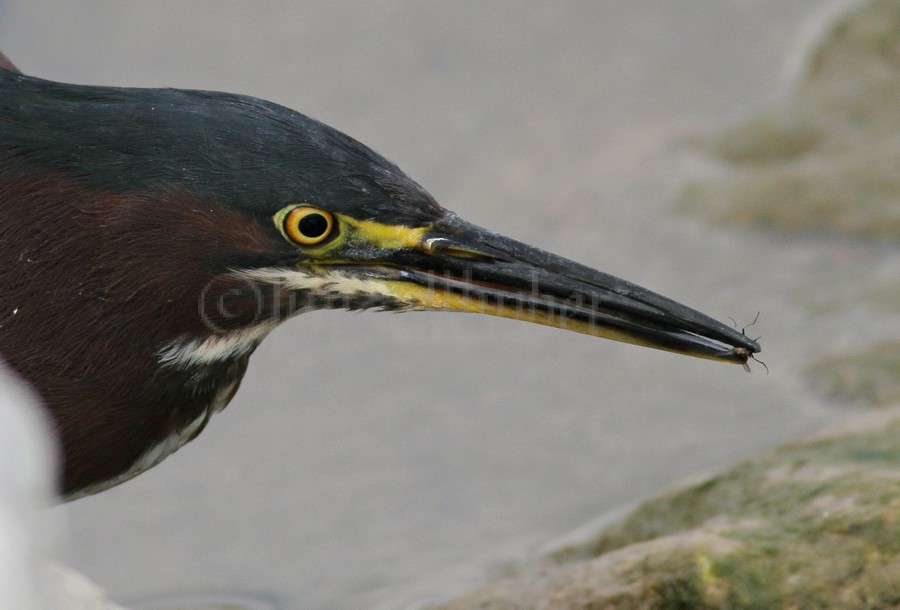
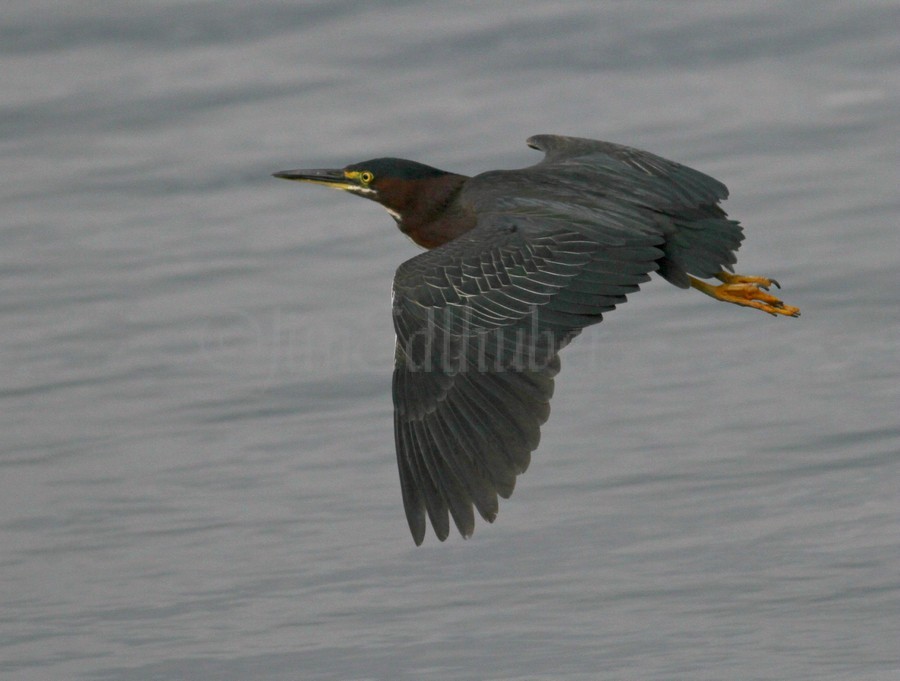
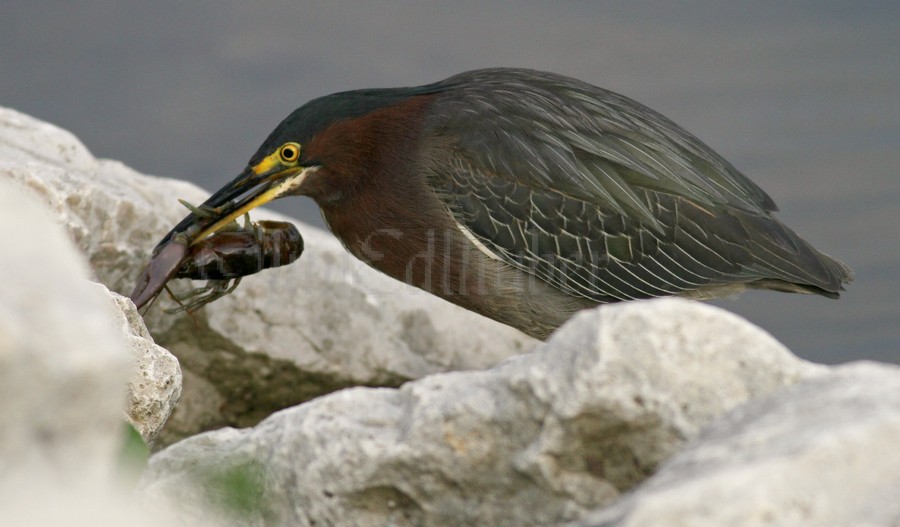
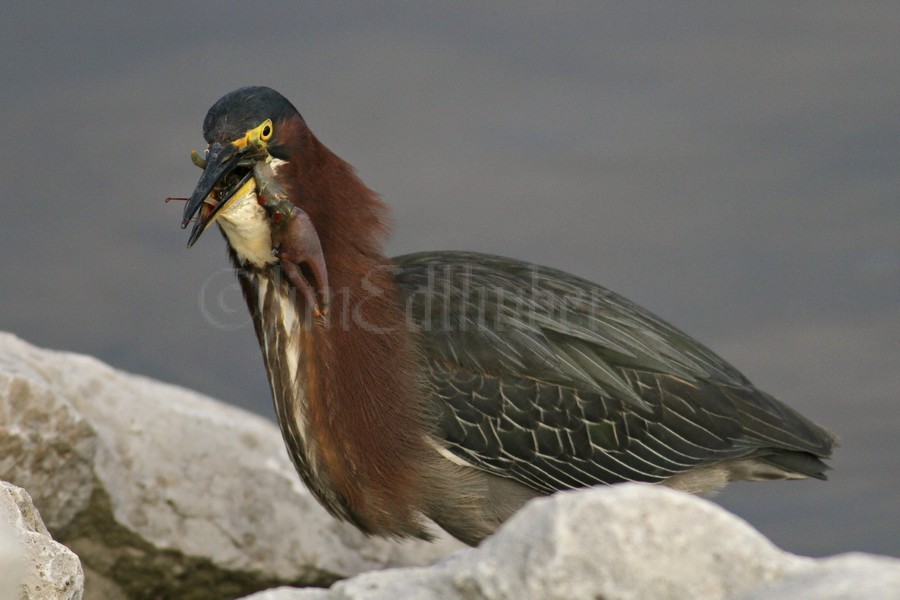
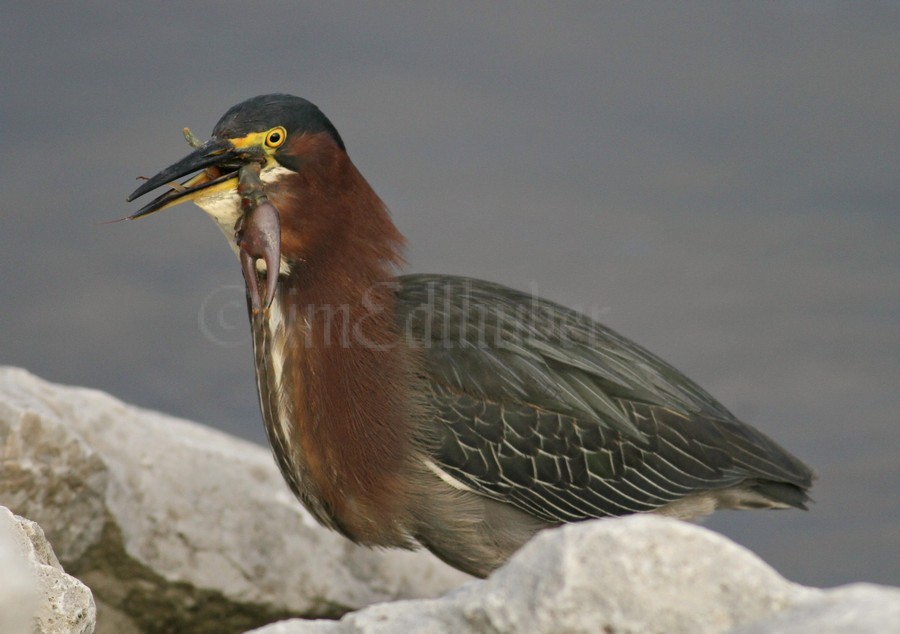
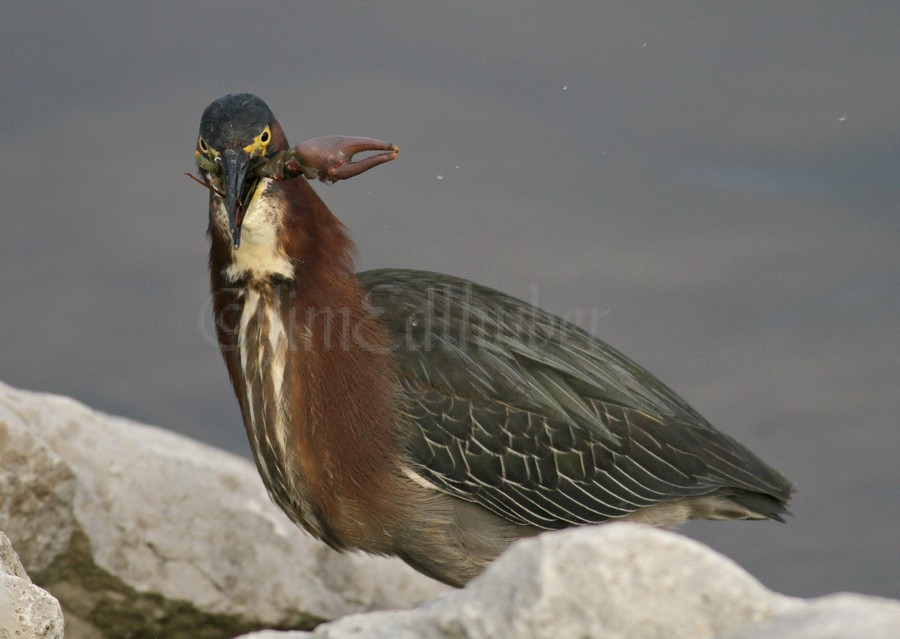
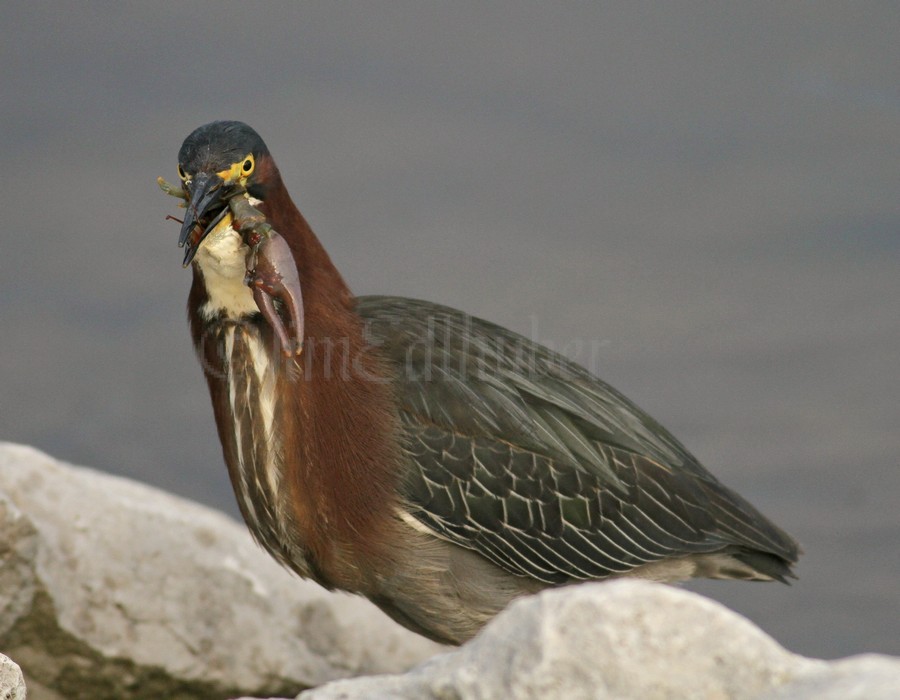
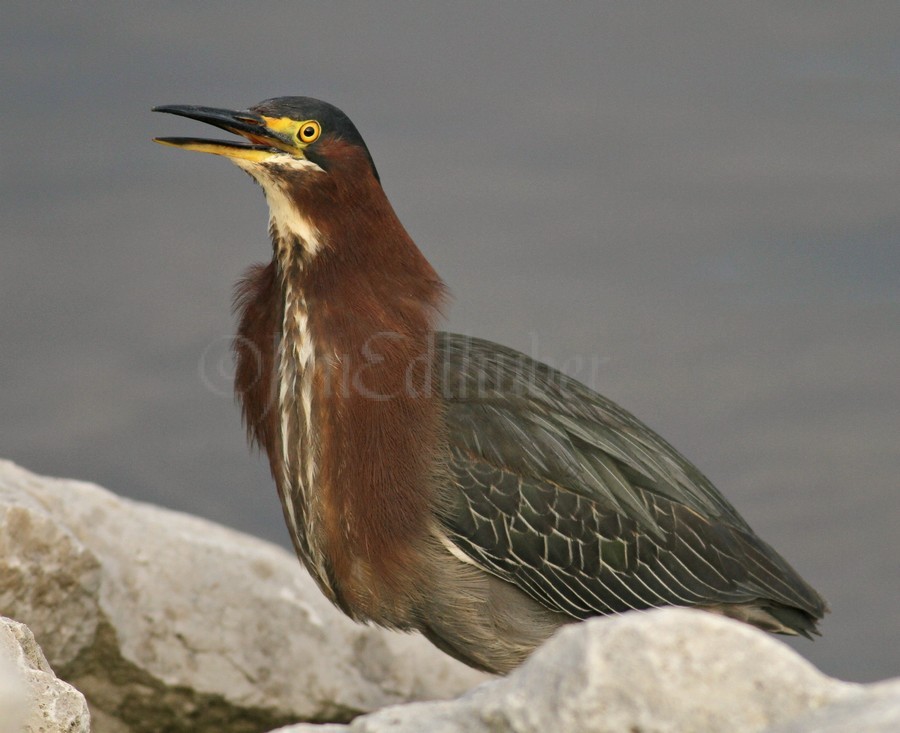
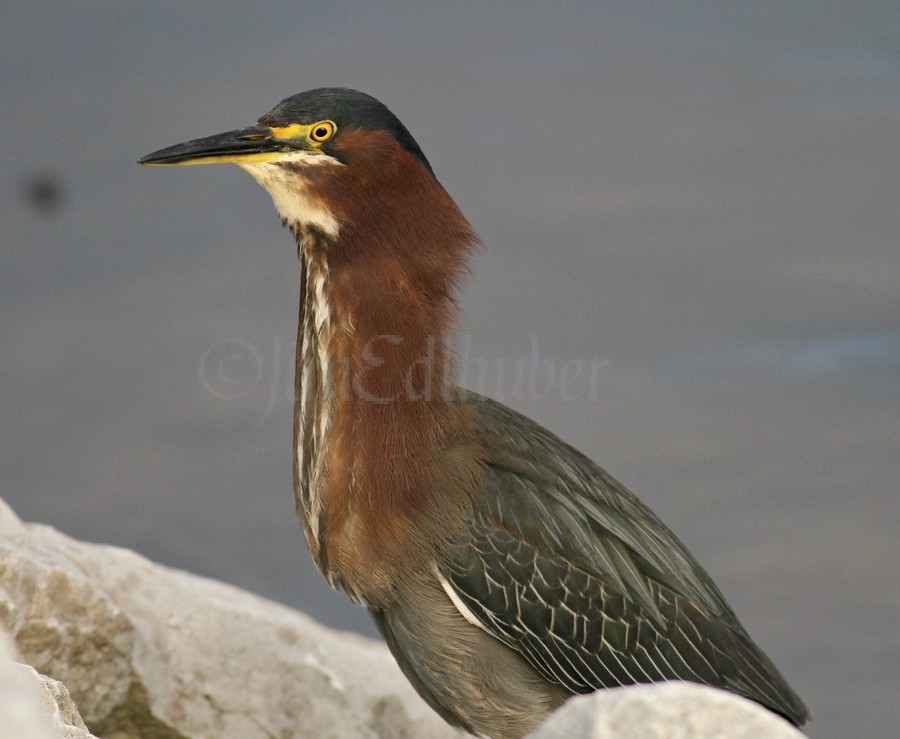
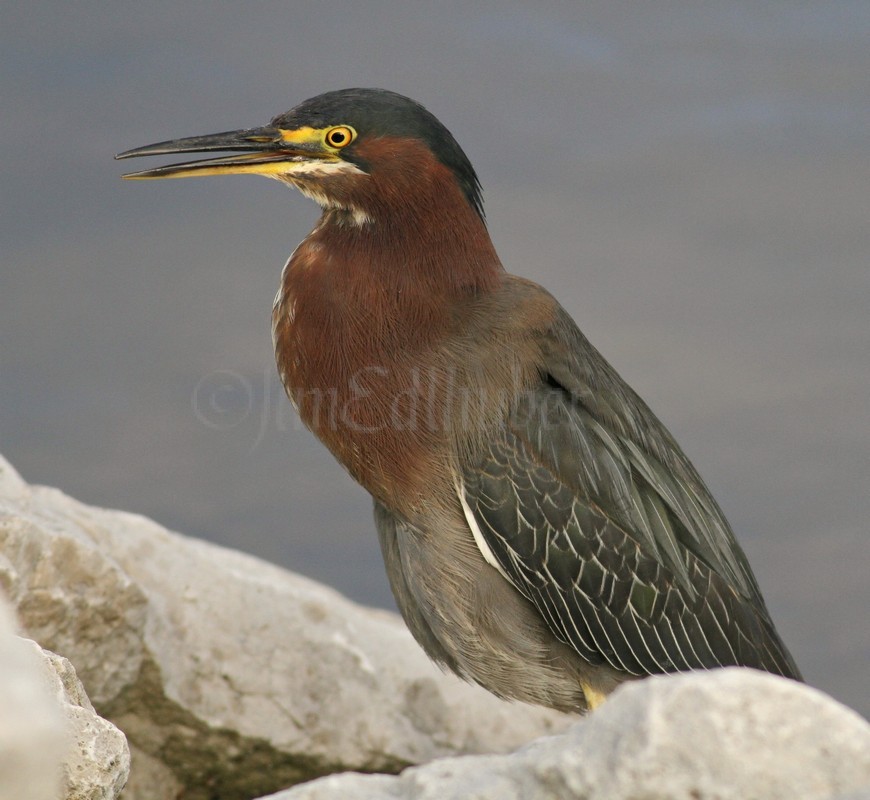
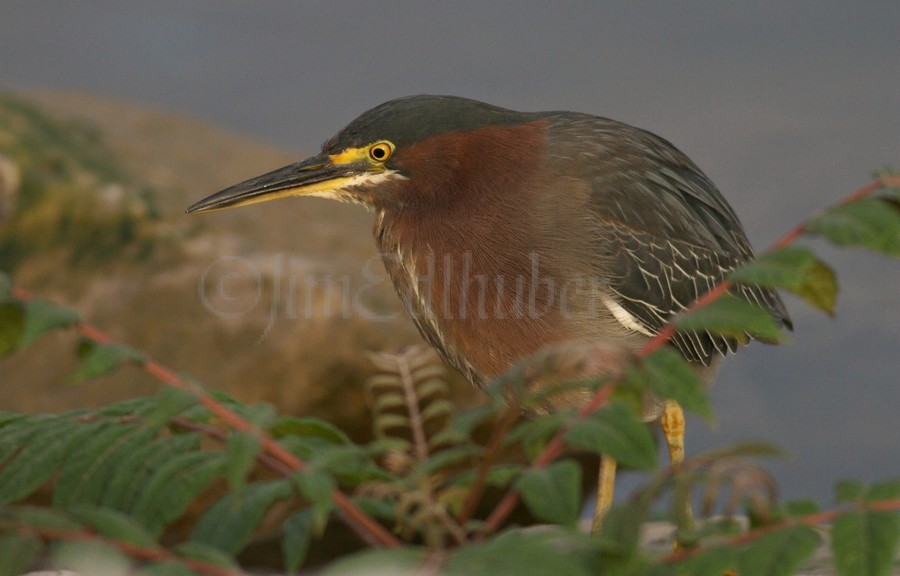
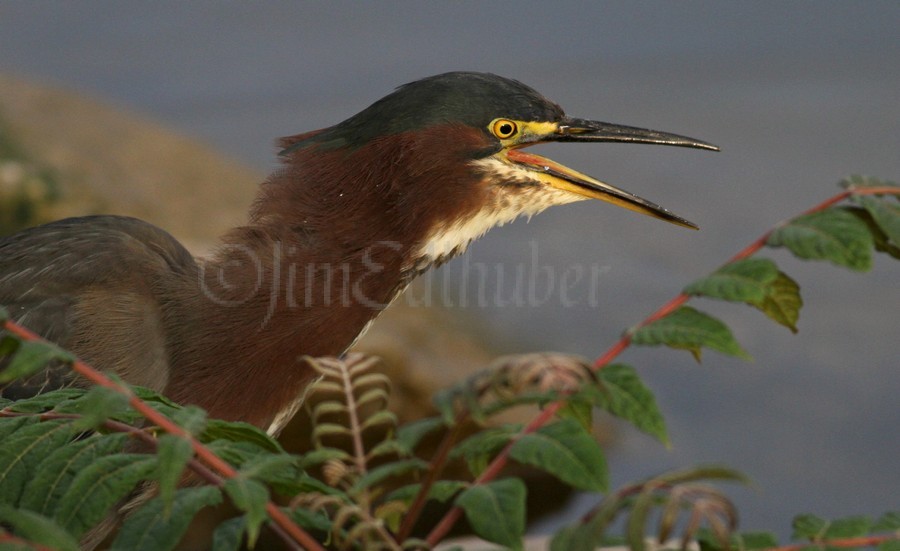
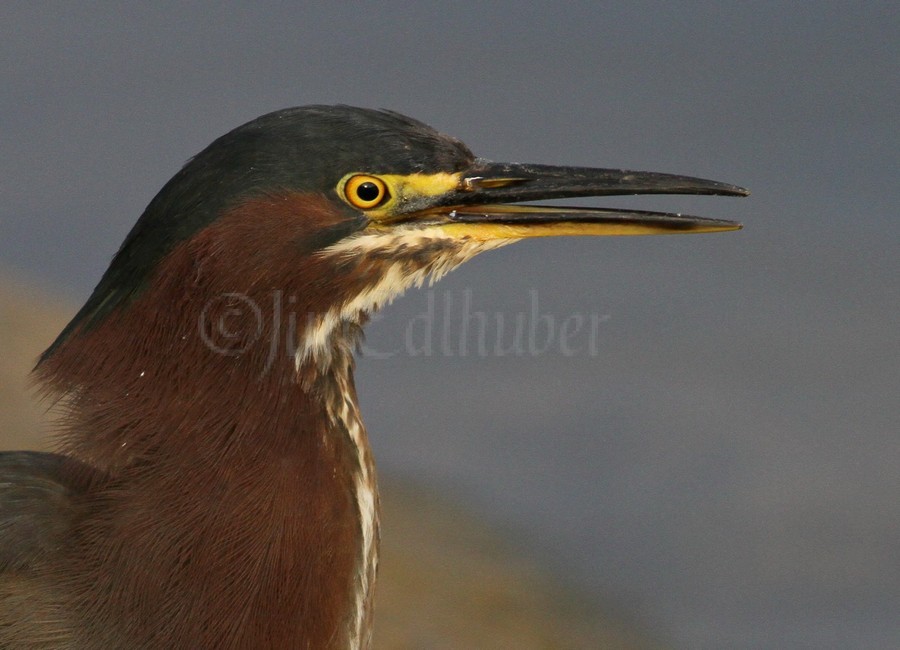
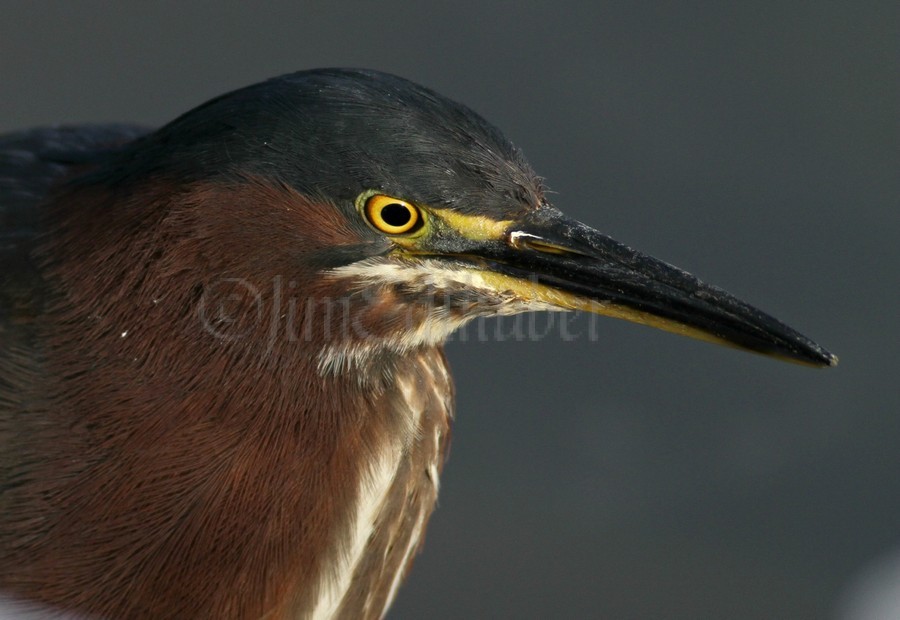
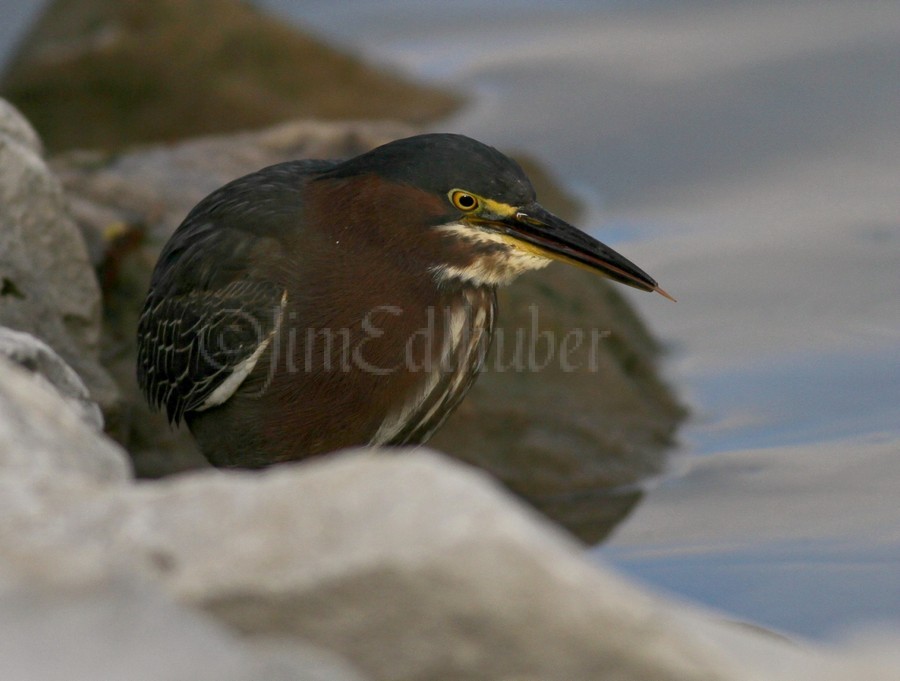
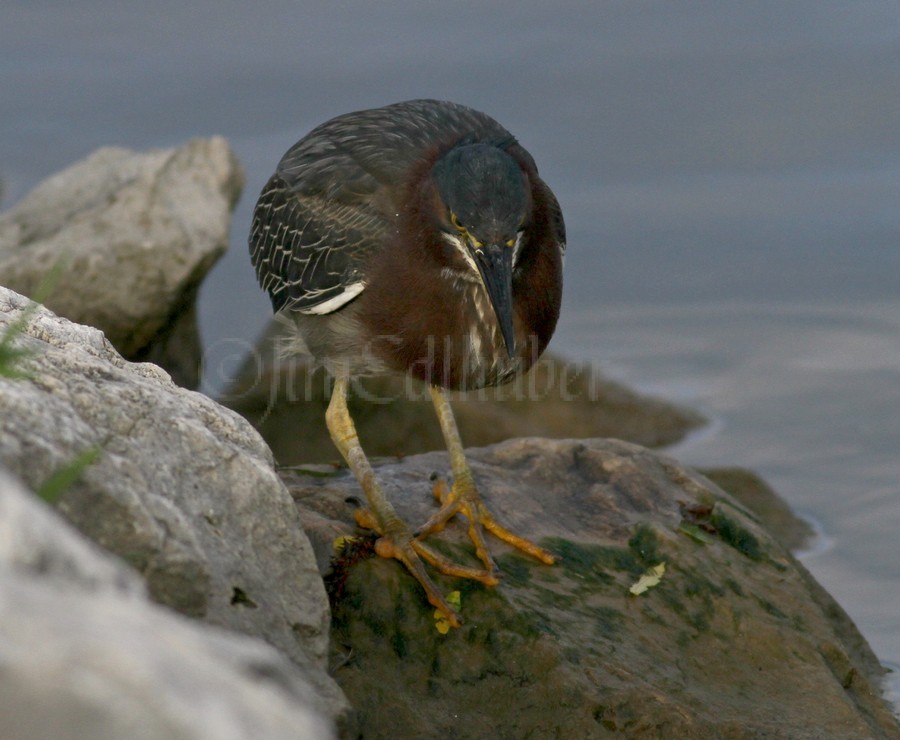
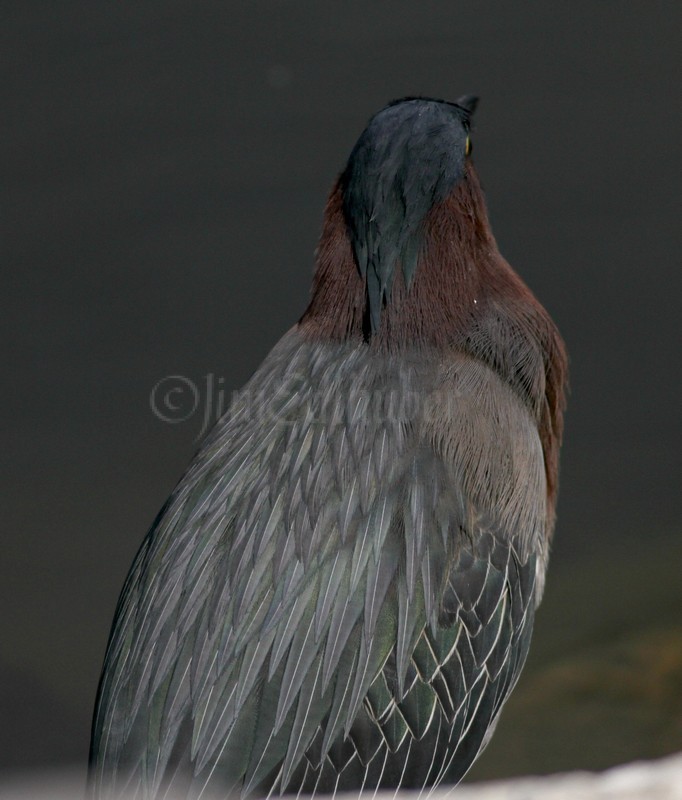
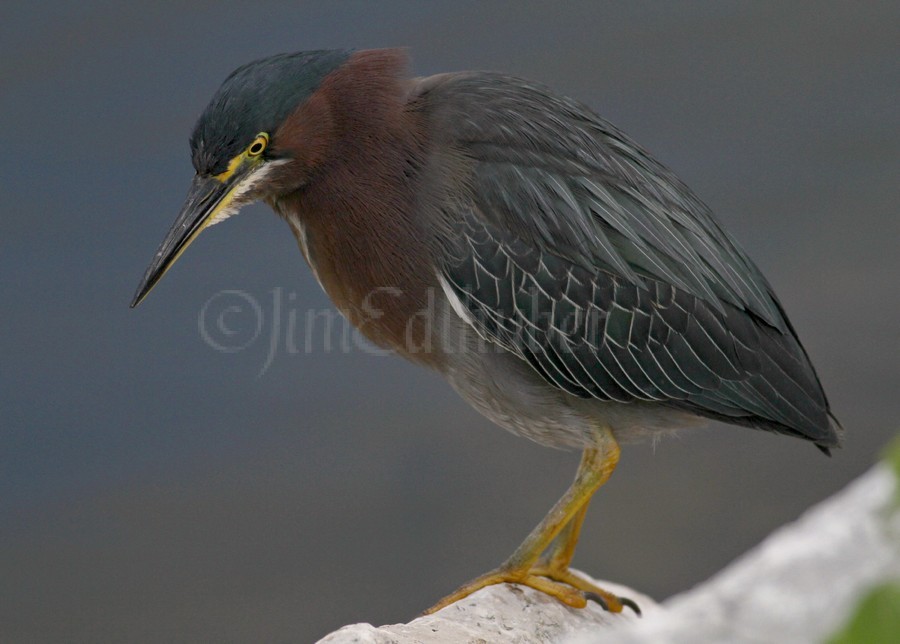
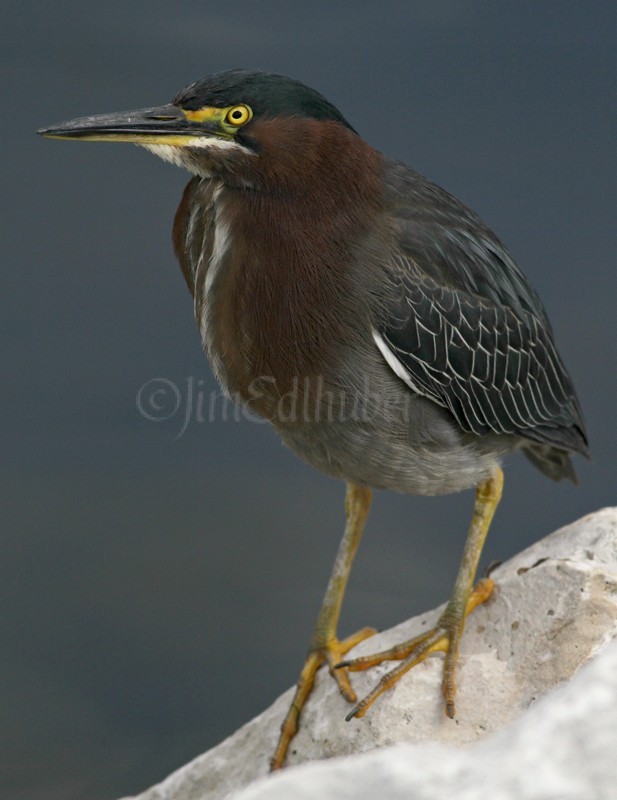
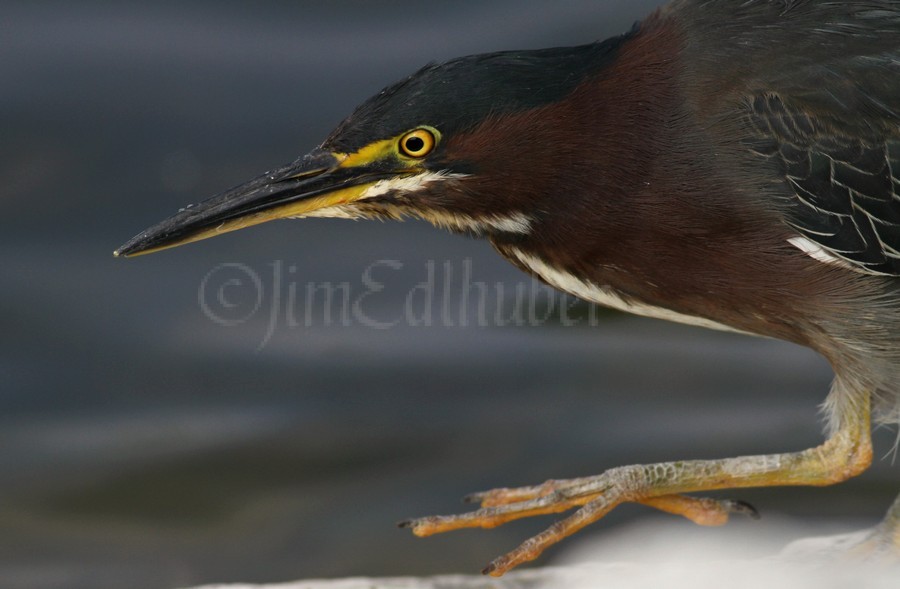
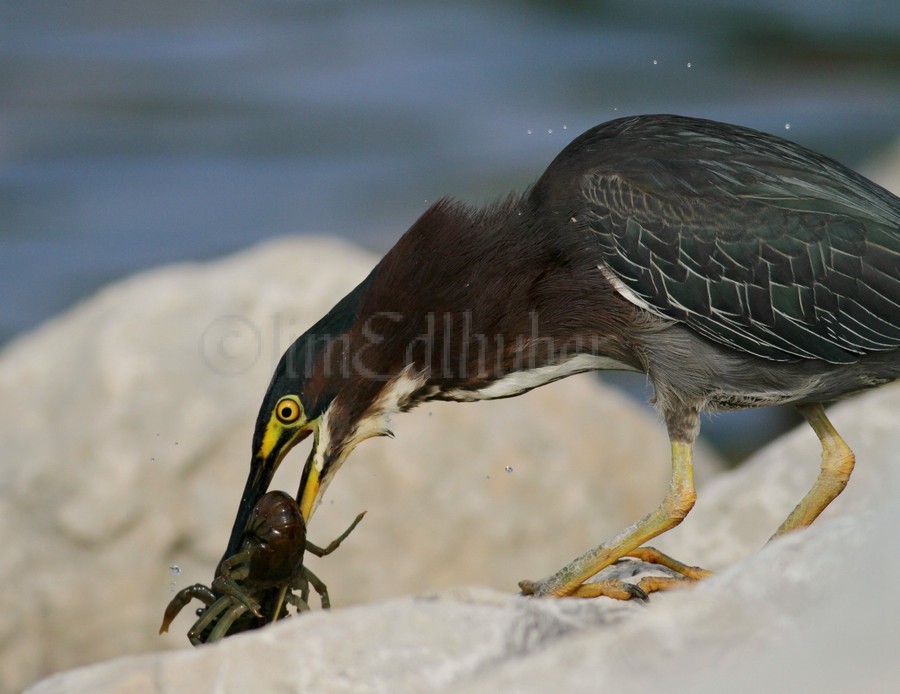
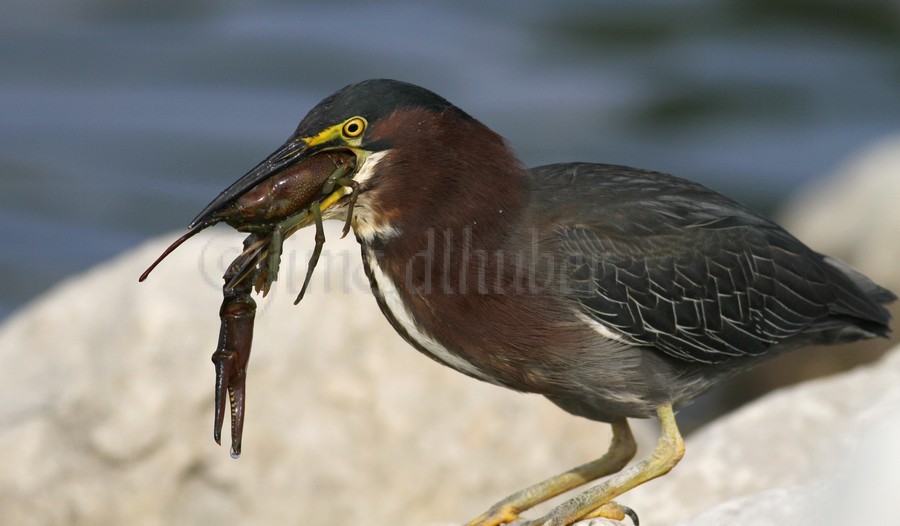
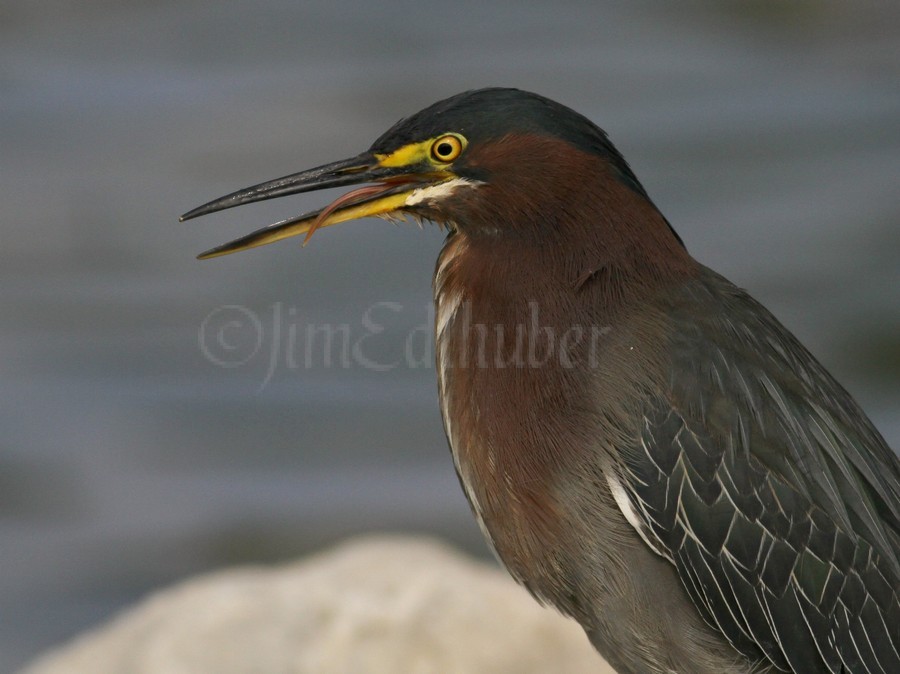
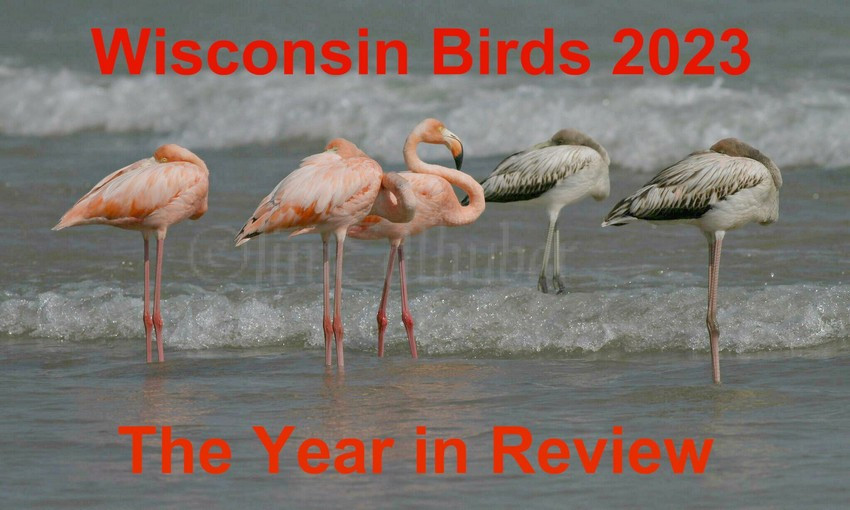
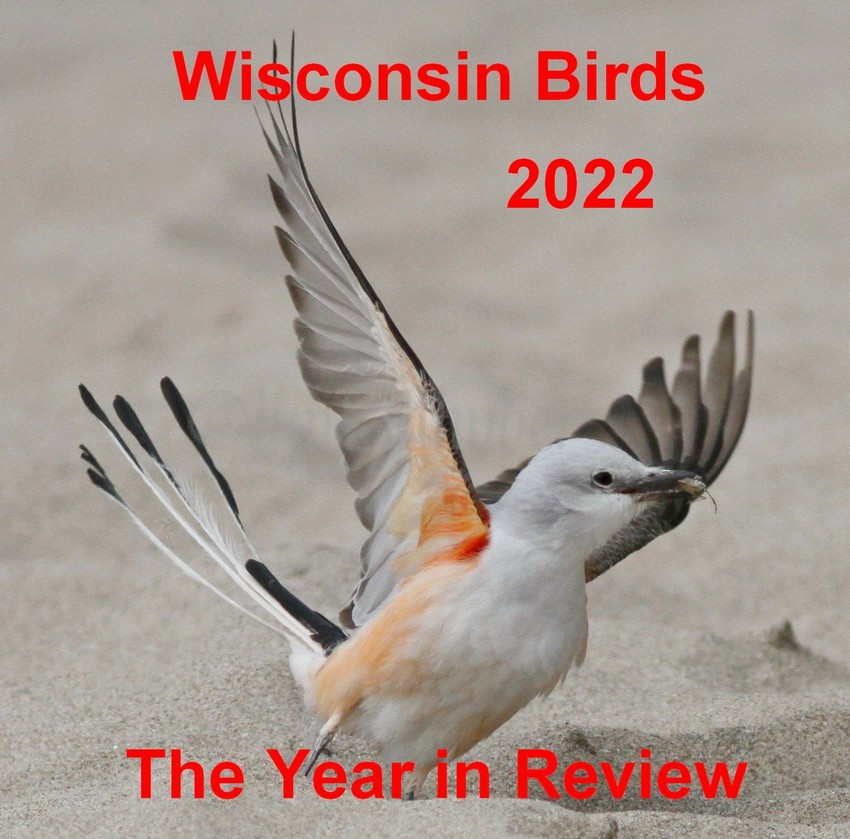
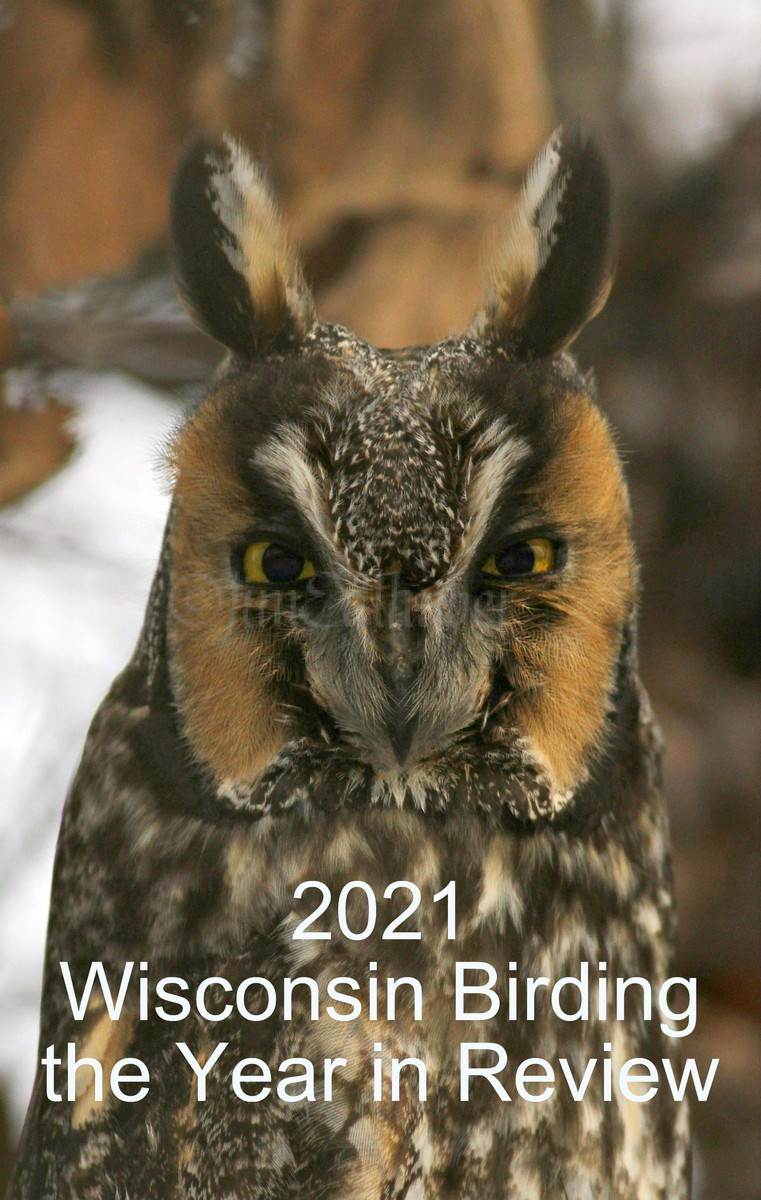
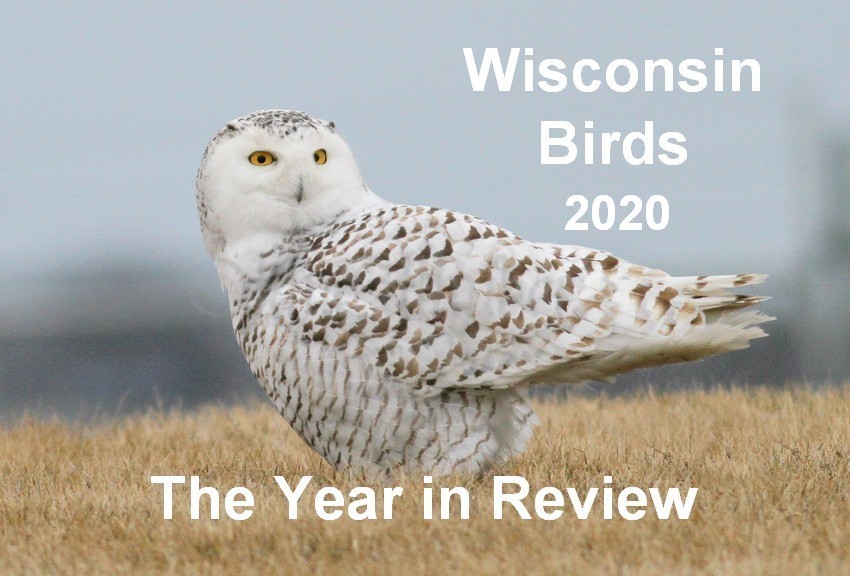
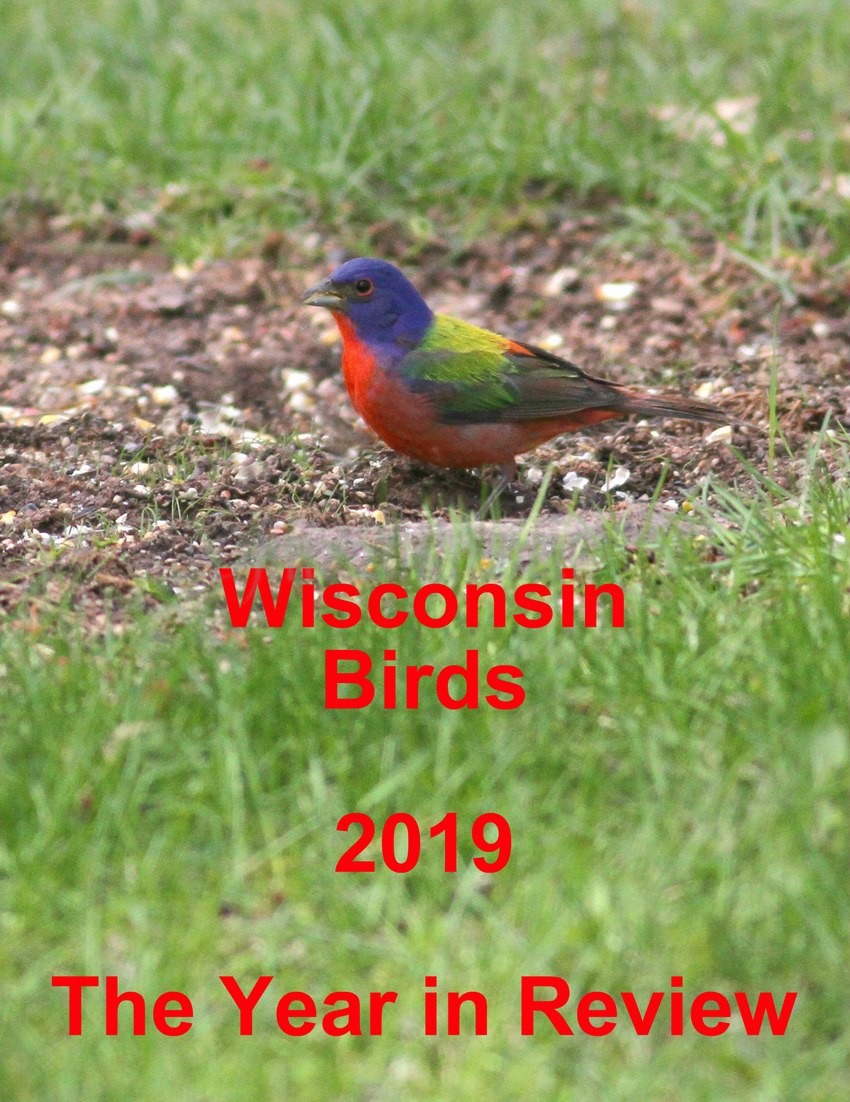
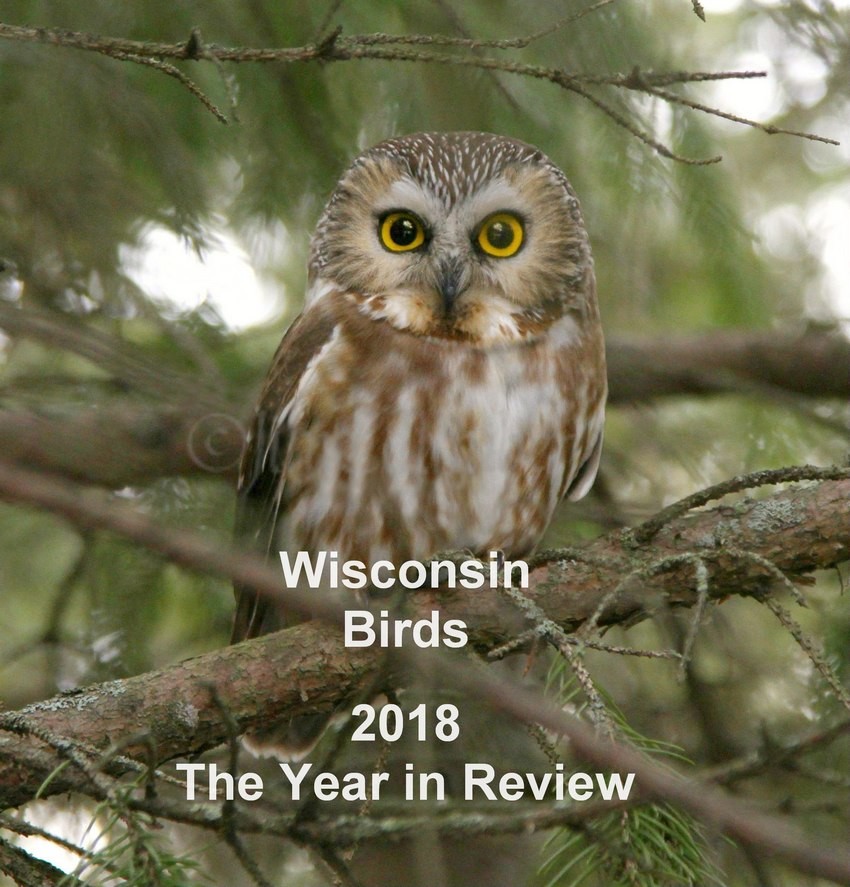
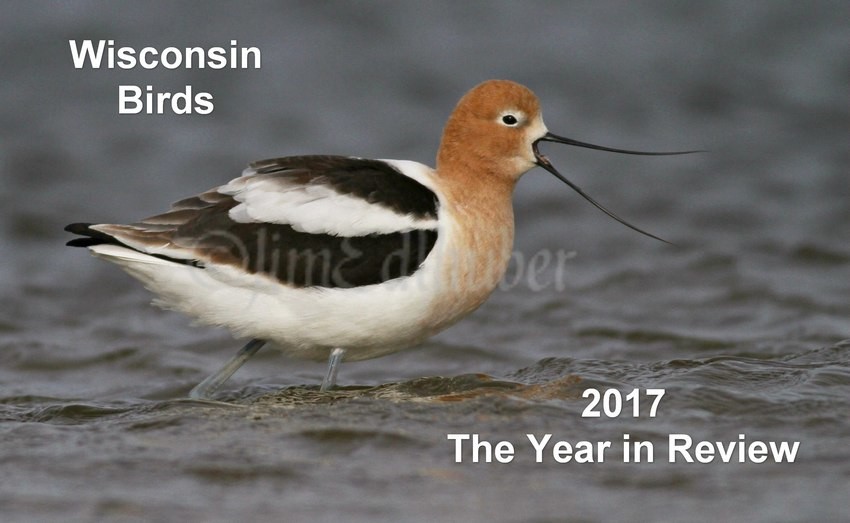
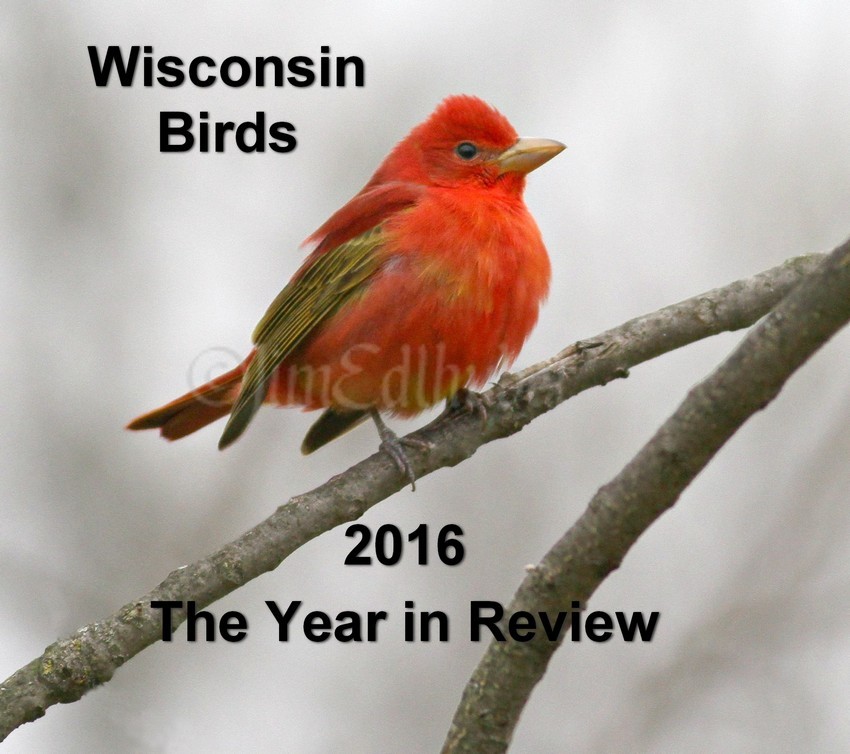
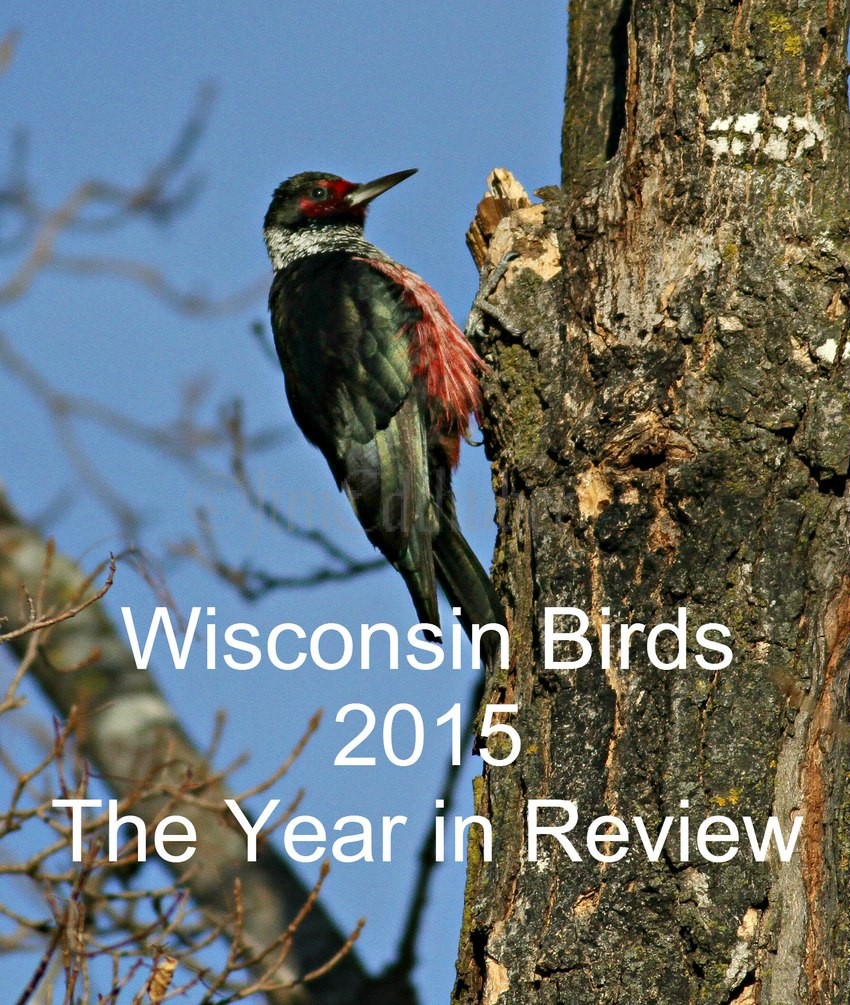
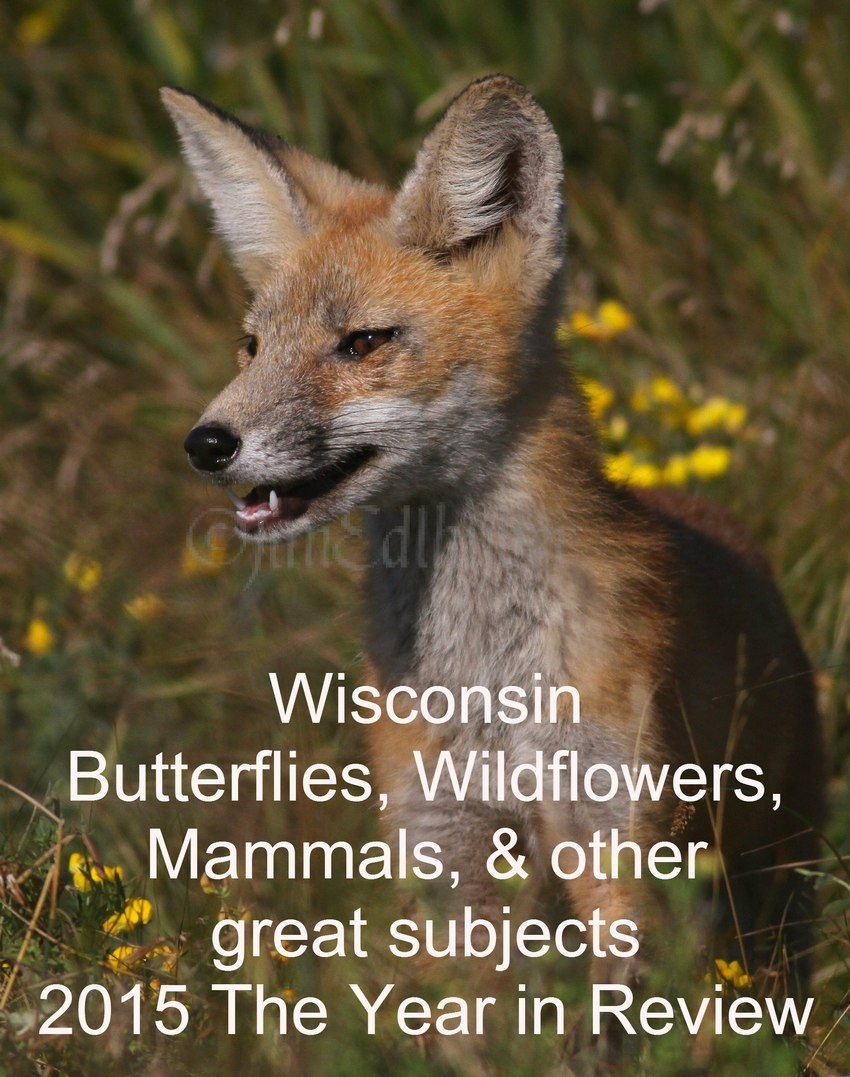
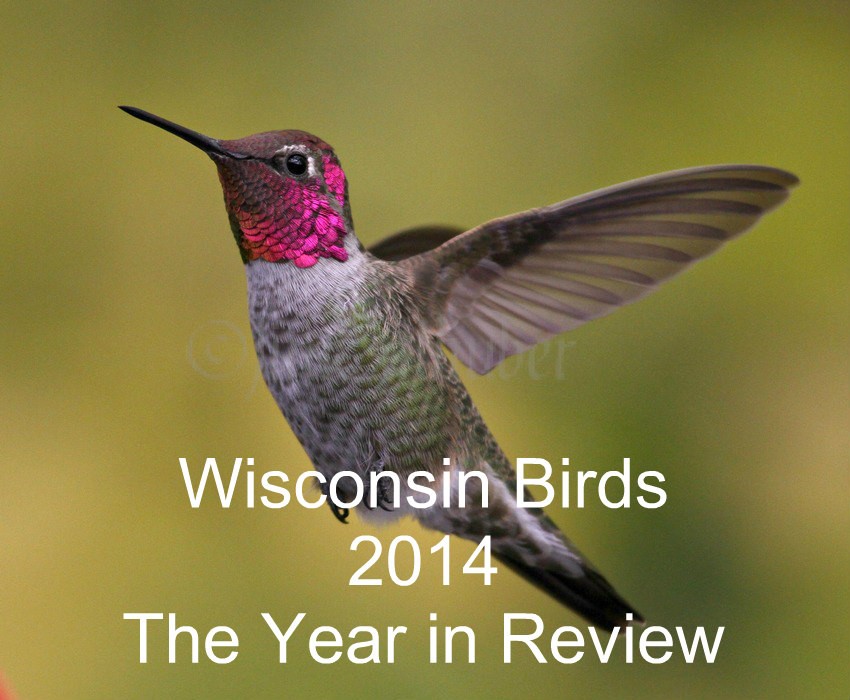
Thanks for sharing your wonderful pictures.
Speechless…I am blown away by these! What great observations and captures! Thanks for bringing me along!!!
Jim – this bird is a masterpiece! The exquisite feather pattern is incredible. You introduce the bird looking very sleek. Then the wind arrives and rearranges the mauve feathers – and suddenly he is an elegant specimen in breeding plumage! Using the insect as lure was truly a remarkable capture. Again and again, you somehow manage to slip into wildlife’s secrecy and reveal hidden beauty and mystery. The early bird gets the crayfish – and the early photo artist gets both bird and crayfish. Thanks for sharing your magic, Jim!